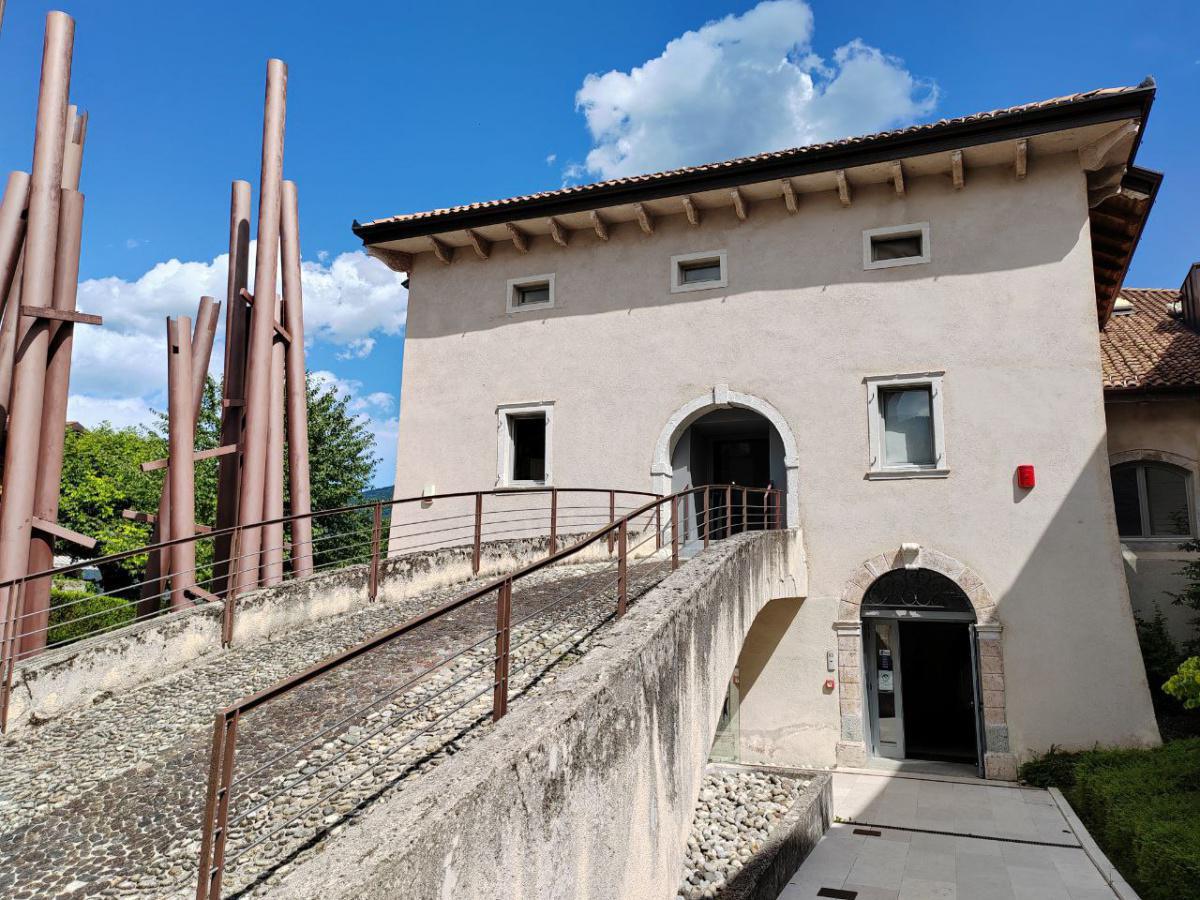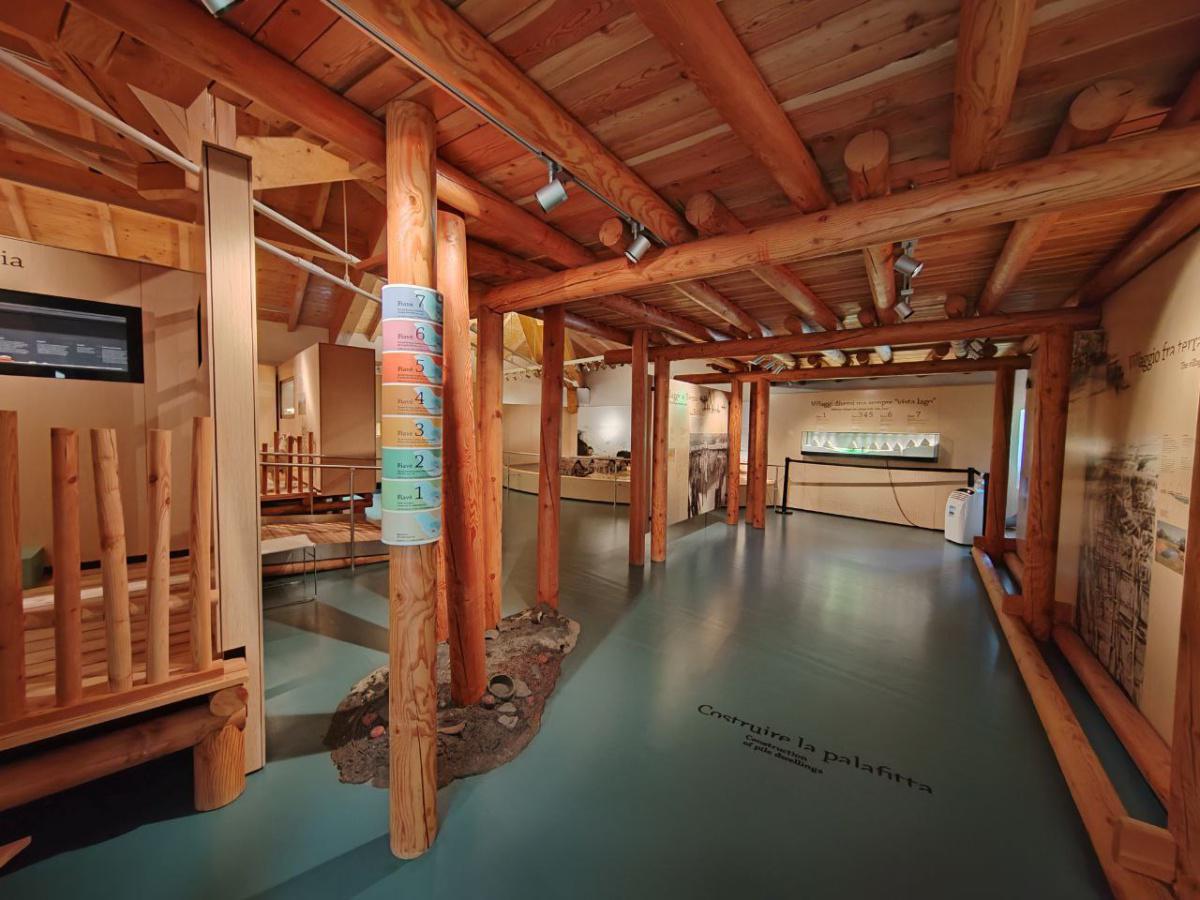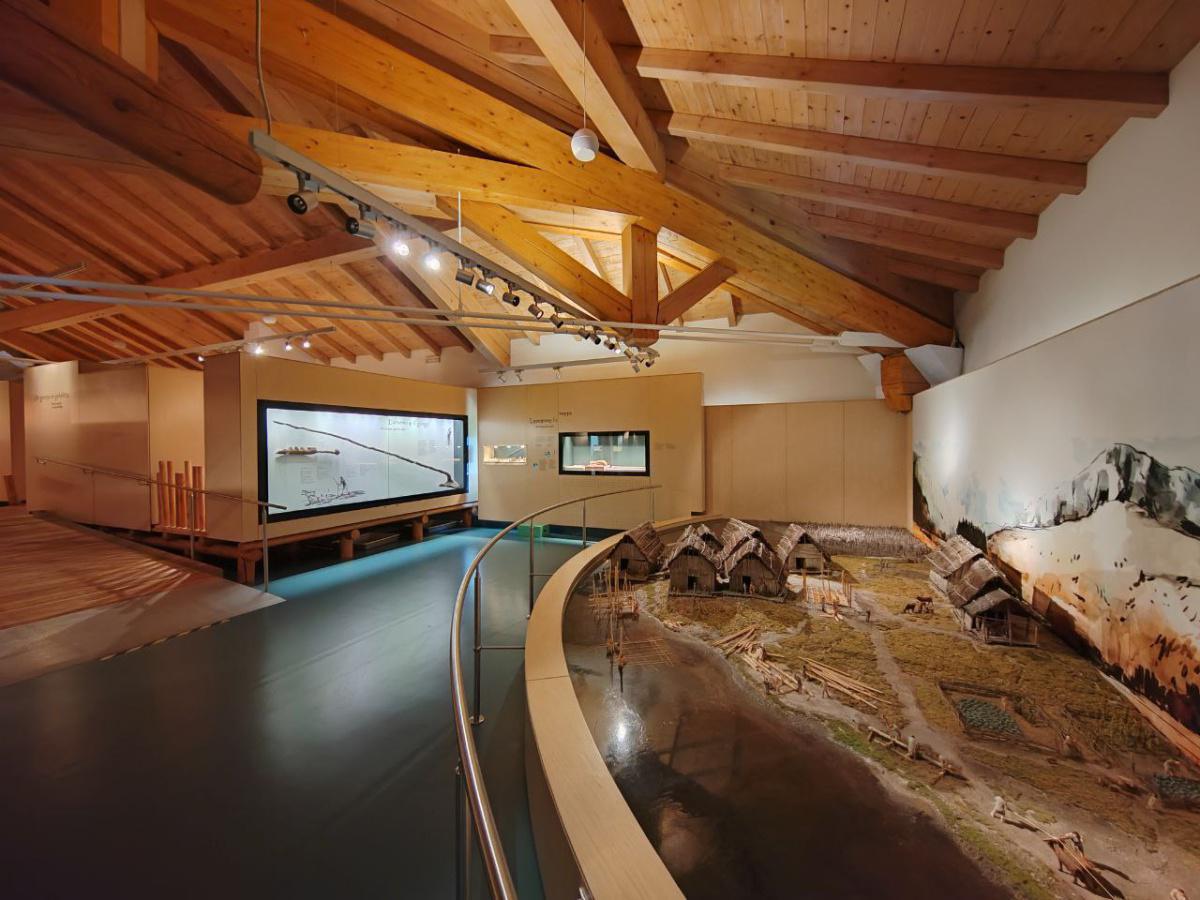Museo delle Palafitte di Fiavè
53 Via 3 Novembre Fiavè
Fiavé, con il Museo delle Palafitte, il Parco Archeo Natura e l'area archeologica nota a livello internazionale e inserita nei "siti palafitticoli preistorici dell'arco alpino" patrimonio dell'umanità UNESCO, costituisce un punto di riferimento di eccezionale rilievo per la storia delle più antiche comunità agricole europee.
Il Museo racconta le vicende dei diversi abitati palafitticoli succedutisi lungo le sponde del lago Carera, bacino di origine glaciale, tra tardo Neolitico ed età del Bronzo. Gli scavi hanno portato alla luce resti di capanne costruite sulla sponda lacustre (3800 - 3600 a.C), ma anche secondo il classico modello della palafitta in elevato sull'acqua (1800 - 1500 a.C. circa). Un'evoluzione di questa tipologia sono le capanne su pali ancorati ad una complessa struttura a reticolo adagiata lungo la sponda e sul fondo del lago (1500 - 1300 a.C.). Negli ultimi secoli del II millennio a.C. l'abitato si sposta sul vicino Dos Gustinaci, dove sono state rinvenute abitazioni con fondazioni in pietra.
L'eccezionale stato di conservazione non solo dei pali, ma anche di molti altri materiali organici, rende queste palafitte particolarmente affascinanti, consentendo di penetrare in aspetti della vita delle comunità preistoriche generalmente sconosciuti alla ricerca archeologica.
Il museo espone una selezione degli straordinari oggetti, rinvenuti dagli archeologi nel corso delle ricerche, che suscitano stupore per la loro modernità. Sono migliaia i materiali caduti in acqua, accidentalmente o gettati al tempo delle palafitte, preziose testimonianze di notevoli conoscenze tecniche e costruttive e di abilità artigiana.
APERTURE
Dal 1° al 31 marzo: sabato, domenica, lunedì e festivi ore 13-18
Dal 1° aprile al 17 giugno: sabato, domenica, lunedì e festivi ore 13-18
Dal 22 giugno al 31 agosto: tutti i giorni ore 10-19
Dal 1° settembre al 13 ottobre: tutti i giorni ore 10-18
Dal 19 al 27 ottobre: sabato, domenica e festivi ore 13-18
Dicembre: sabato, domenica e festivi (escluso il 25) e dal 27 al 30 ore 13-18
Fonte: https://www.cultura.trentino.it/
EN
Fiavé, with the Pile-Dwelling Museum, the Archaeological Nature Park and the internationally renowned archaeological area included in the UNESCO World Heritage 'prehistoric pile-dwelling sites of the Alps', is an exceptionally important reference point for the history of the oldest European farming communities.
The Museum tells the story of the various pile-dwelling settlements that followed one another along the shores of Lake Carera, a basin of glacial origin, between the late Neolithic and the Bronze Age. Excavations have brought to light remains of huts built on the lake shore (3800 - 3600 B.C.), but also according to the classic model of the pile dwelling high above the water (c. 1800 - 1500 B.C.). An evolution of this typology are the huts on piles anchored to a complex lattice structure lying along the shore and at the bottom of the lake (1500 - 1300 BC). In the last centuries of the 2nd millennium B.C., the settlement moved to the nearby Dos Gustinaci, where dwellings with stone foundations were found.
The exceptional state of preservation not only of the piles, but also of many other organic materials, makes these pile dwellings particularly fascinating, allowing insight into aspects of the life of prehistoric communities generally unknown to archaeological research.
OPENINGS
1 to 31 March: Saturdays, Sundays, Mondays and public holidays 1-6 p.m.
1 April to 17 June: Saturdays, Sundays, Mondays and public holidays 1-6 p.m.
22 June to 31 August: daily 10am-7pm
1 September to 13 October: daily from 10 a.m. to 6 p.m.
19 to 27 October: Saturdays, Sundays and public holidays 1-6 p.m.
December: Saturdays, Sundays and public holidays (except 25th) and from 27th to 30th 1-6 p.m.
DE
Fiavé ist mit dem Pfahlbaumuseum, dem archäologischen Naturpark und dem international bekannten archäologischen Gebiet, das zum UNESCO-Welterbe "Prähistorische Pfahlbauten der Alpen" gehört, ein außerordentlich wichtiger Bezugspunkt für die Geschichte der ältesten europäischen Bauerngemeinschaften.
Das Museum erzählt die Geschichte der verschiedenen Pfahlbausiedlungen, die zwischen dem späten Neolithikum und der Bronzezeit an den Ufern des Carera-Sees, eines Beckens eiszeitlichen Ursprungs, aufeinander folgten. Ausgrabungen haben Überreste von Hütten ans Licht gebracht, die am Seeufer (3800 - 3600 v. Chr.), aber auch nach dem klassischen Modell der Pfahlbausiedlung hoch über dem Wasser (ca. 1800 - 1500 v. Chr.) errichtet wurden. Eine Weiterentwicklung dieser Typologie sind die Pfahlbauten, die an einer komplexen Gitterstruktur entlang des Ufers und auf dem Grund des Sees verankert sind (1500 - 1300 v. Chr.). In den letzten Jahrhunderten des 2. Jahrtausends v. Chr. verlagerte sich die Siedlung in das nahe gelegene Dos Gustinaci, wo man Behausungen mit Steinfundamenten fand.
Der außergewöhnliche Erhaltungszustand nicht nur der Pfähle, sondern auch vieler anderer organischer Materialien macht diese Pfahlbauten besonders faszinierend und erlaubt Einblicke in Aspekte des Lebens prähistorischer Gemeinschaften, die der archäologischen Forschung im Allgemeinen unbekannt sind.



